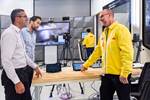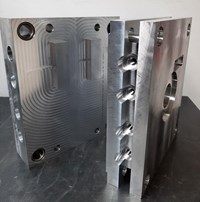New Regulatory Impacts
New guidelines from the U.S. Treasury may affect when moldmakers can claim the R&D tax credit.
While many moldmakers have been claiming the R&D tax credit for years, new regulations from the U.S. Department of the Treasury may impact the amount of credit for which they are eligible. These regulations involve the definition of research expenditures and the calculation of the R&D tax credit on amended tax returns.
In July 2014, the Treasury finalized regulations defining research expenditures under Internal Revenue Code §174 and indicated that businesses can use these proposed regulations for all tax years.
Under these new regulations, as long as the expenditures qualify as research or experimental, it is irrelevant whether a resulting product is sold or used in the taxpayer’s trade or business. In moldmaking, a product could be a mold, a production process or a pilot model, including fully-functional representations or models of a mold or component. Only when a mold design is final can one determine if an expenditure (or activity) meets the definition of research. A moldmaker must then determine if any costs incurred during the mold design qualify as research expenditures. Not all expenditures related to new-mold development qualify. For example, if a moldmaker starts with an “off-the-shelf” mold base, the cores and cavities may qualify as research expenditures, but the mold base may not qualify. On the other hand, if a moldmaker designs and develops a custom mold base in conjunction with the cores and cavities (perhaps due to complex venting or water line designs), the mold base is an instrumental part of the mold design and may qualify as a research expenditure.
In February 2015, the Treasury finalized regulations allowing businesses to claim the Alternative Simplified Credit (ASC) on amended tax returns if the business had not claimed the research credit on its original tax return for that year. This can yield significant cost and time savings.
The R&D tax credit is meant to encourage businesses to increase research activities by exceeding a “base amount,” using the traditional or ASC method. The traditional method requires research expenditure documentation from the 1980s or late 1990s (depending on the start of the company’s research activities). The ASC method uses the three previous tax years to determine the base amount, which is equal to 50 percent of the average of a business’ prior three years of research expenditures. This means those companies that are not increasing research efforts can still qualify for the credit.
Prior to the issuance of these treasury regulations, the ASC method had to be elected on an originally filed return, including extensions. Now, businesses can elect the ASC in any tax year for which they haven’t already claimed a credit under the traditional method, allowing them to amend their prior years’ tax returns to claim the credit.
Despite the complexity of these new rules, moldmakers need to consider their positive impact on tax filings.
Mueller Prost
Related Content
-
Resilient by Design: Moldmakers Respond to Tariff Tensions With Strength and Strategy
Amid tariff uncertainties, moldmakers must stay flexible, control what they can, plan for multiple scenarios and maintain team alignment.
-
Dynamic Tool Corp: Leadtime Leader Insights and Bold Plans for the Future | MMT Chats
MoldMaking Technology Editorial Director Christina Fuges gets the scoop from our 2024 Leadtime Leader Award Winner Dynamic Tool Corp., on the company's future, their trade show experience, finding new talent and the impact of this industry recognition.
-
Leadtime Leader Award Winners: Hall of Fame
MoldMaking Technology’s Leadtime Leader Competition has been an ongoing award since 2003. It is a prestigious award given only to North American mold builders that go above and beyond in moldmaking. Honorees have expressed the value the Award has afforded them in exposure, recognition, morale and new business. Isn’t it time we add your shop’s name to the list?















